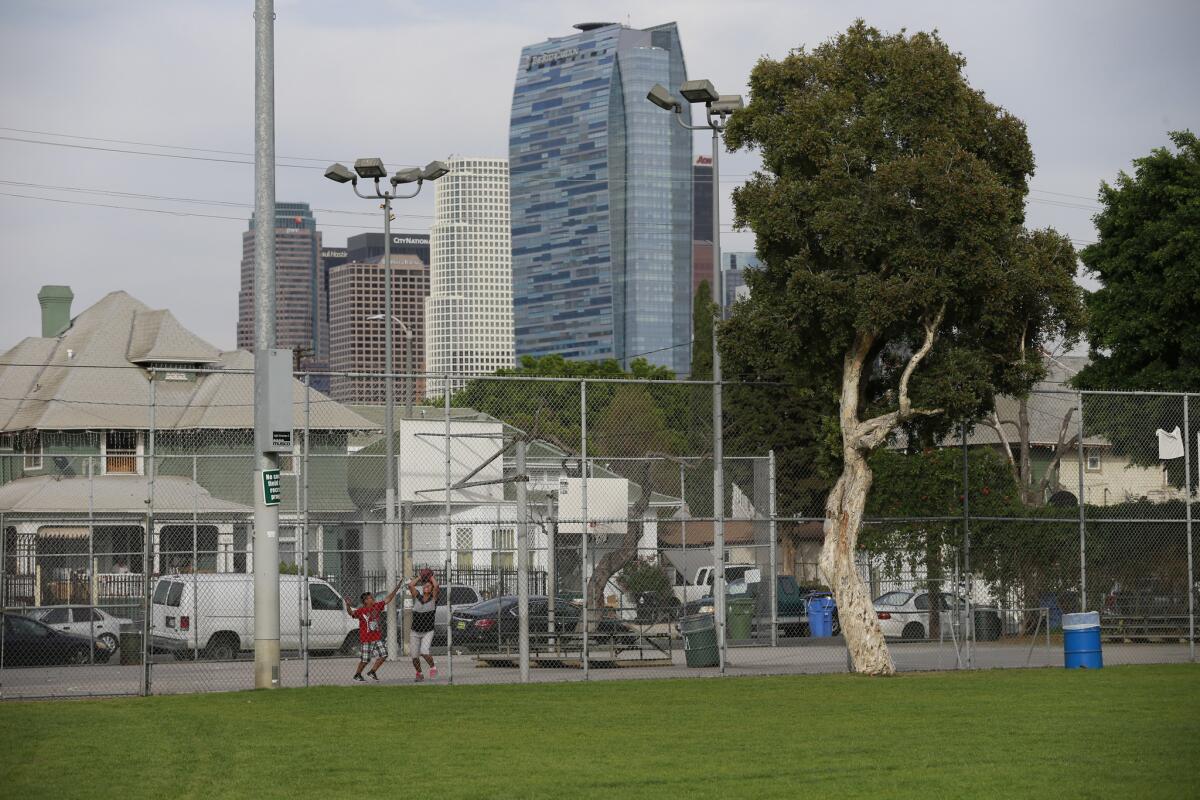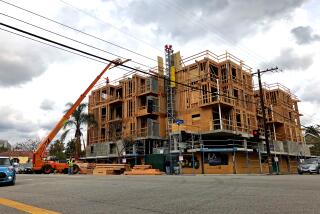New L.A. city guidelines take aim at sharp health disparities

- Share via
In what experts say reflects a shift in thinking about public health policy, Los Angeles lawmakers Tuesday adopted new planning guidelines aimed at reducing sharp health disparities across the city.
The objectives include improving access to grocery stores and increasing life expectancy. But they also establish targets not traditionally part of health policy: adding park space, reducing motor vehicle crashes, increasing the number of low-cost day-care centers and beautifying the community.
Unanimously approved by the L.A. City Council, the Health and Wellness Element of the city’s general plan acknowledges health is affected by a complex web of neighborhood conditions related to city planning.
“They’re not isolated pieces — you can’t just fix one thing and you’re going to solve health for everybody,” said senior city planner Claire Bowin.
Several California cities have added health components to their general plans in recent years, including Richmond, South Gate, El Monte and Murrieta. Many more are working on developing these guidelines.
In Los Angeles, the plan focuses on stark health differences among the city’s 3.9 million residents.
For instance, a city analysis found that on average, Brentwood residents live 12 years longer than Watts residents, and more than 30% of children in South L.A. and Boyle Heights are obese compared with fewer than 12% in Brentwood.
It also found that communities suffering from health problems were disadvantaged in other ways — lacking access to affordable housing, transportation and open space.
“The built environment has an enormous impact on health,” said Beatriz Solis, director of the California Endowment’s Healthy Communities program for the Southern Region. She said that health is affected in countless ways, from “safe walks to school to climate change to zoning and regulation on fracking to affordable housing.”
Among other things, research has shown that people who feel unsafe in their neighborhoods or don’t have a park within walking distance are less likely to exercise.
And while overall Los Angeles has 8.9 acres of park space per 1,000 residents — close to three times an accepted standard — the ratio is less than one acre per 1,000 residents in many areas.
The city’s new guidelines include such goals as ensuring 75% of all residents are within a quarter of a mile of a park, and increasing the number of Angelenos who live within a mile of a farmers market.
No additional money has been earmarked to achieve the plan’s health goals. But officials expect the amendments to the general plan to serve as a guide when crafting new policies, such as zoning code changes or allocating resources for public libraries.
Matt Raimi, a consultant who worked on L.A.’s plan and similar projects in other cities, said it’s vital that the city follows up with resources to address health issues.
“Too often [planning documents] get created and nothing happens to them. It’s going to take funding, it’s going to take political will, it’s going to take hard work,” he said. “This is the beginning and not the end.”
He said it’s too early to measure whether similar plans in other cities have succeeded in reducing obesity, increasing residents’ physical activity and making other health improvements.
However, updated general plans have changed the discourse around city policy, he said, by reminding local lawmakers how individual decisions can affect the long-term health of a community.
L.A.’s new health plan was a joint effort between the Los Angeles County Department of Public Health, the city’s Planning Commission and the California Endowment, with funding from the U.S. Centers for Disease Control and Prevention.
Follow @skarlamangla on Twitter for more L.A. health news.
More to Read
Sign up for Essential California
The most important California stories and recommendations in your inbox every morning.
You may occasionally receive promotional content from the Los Angeles Times.











